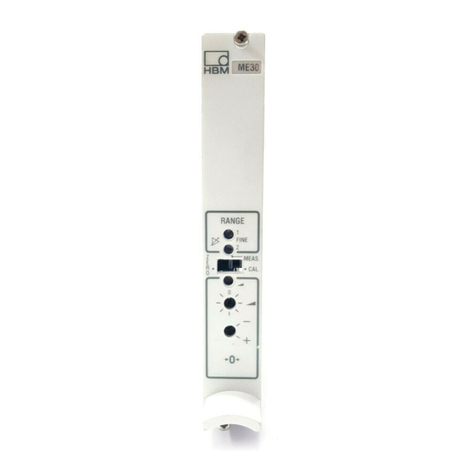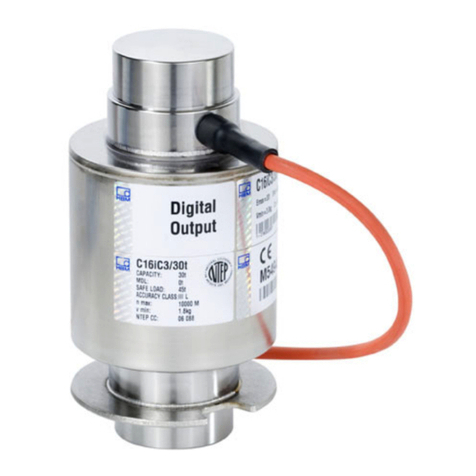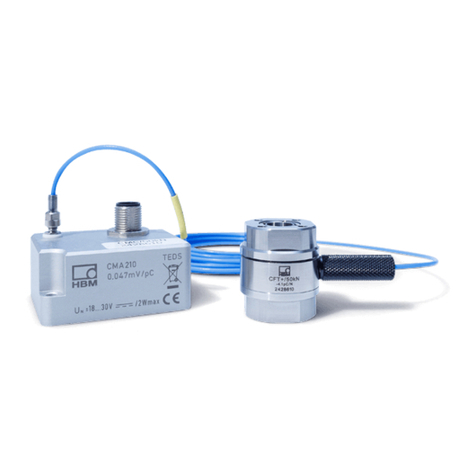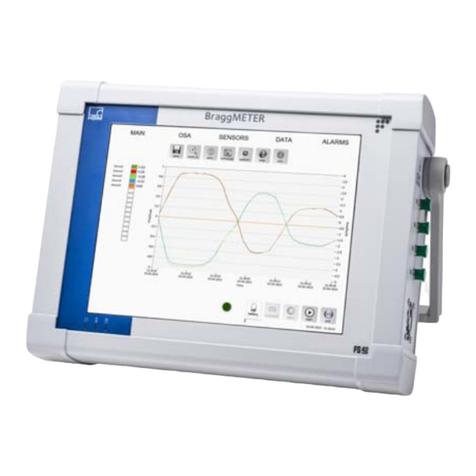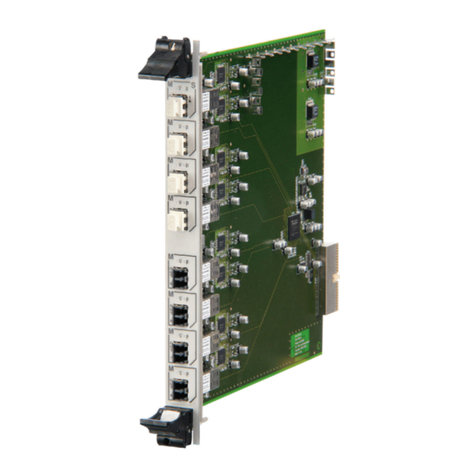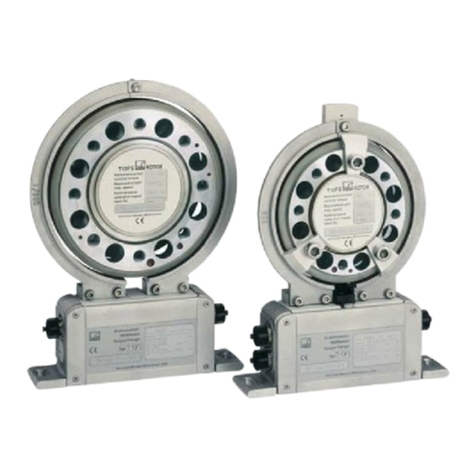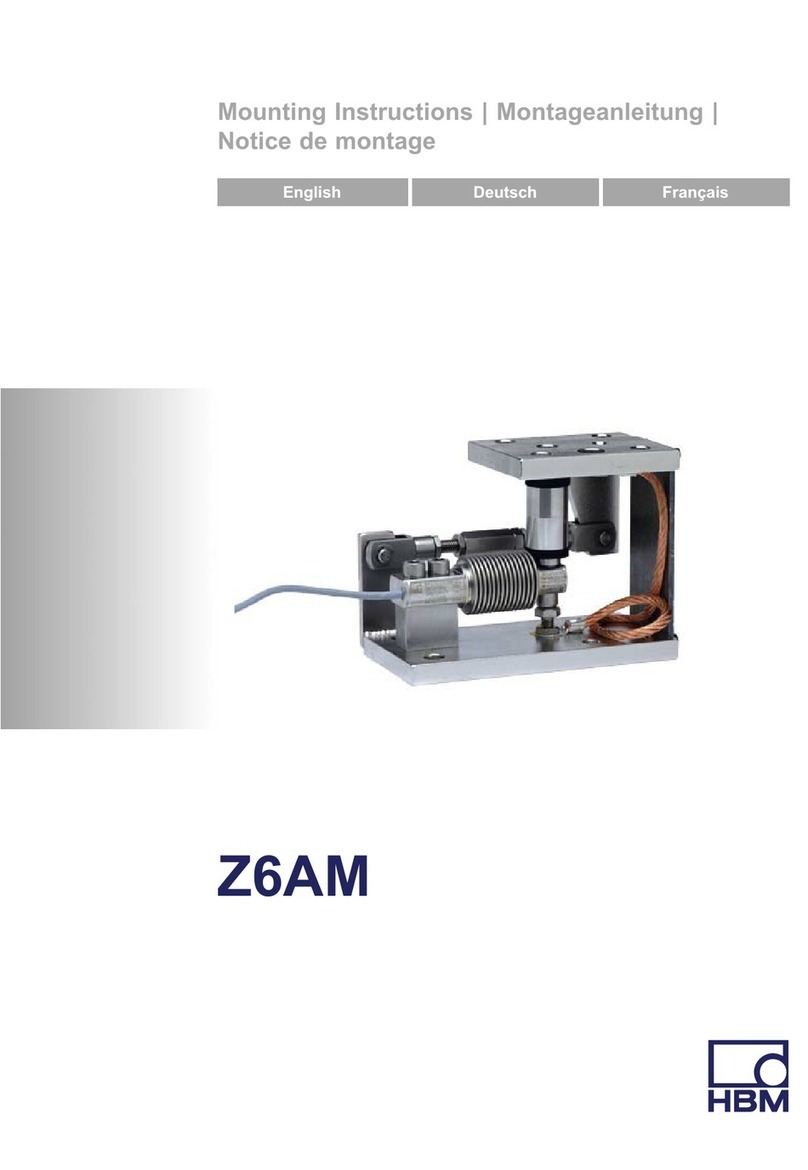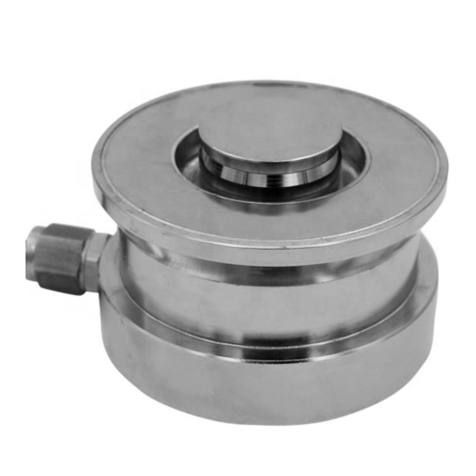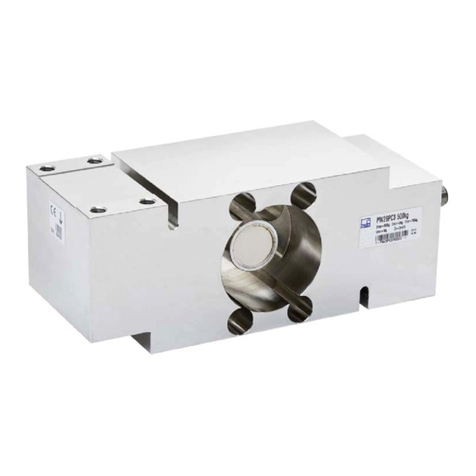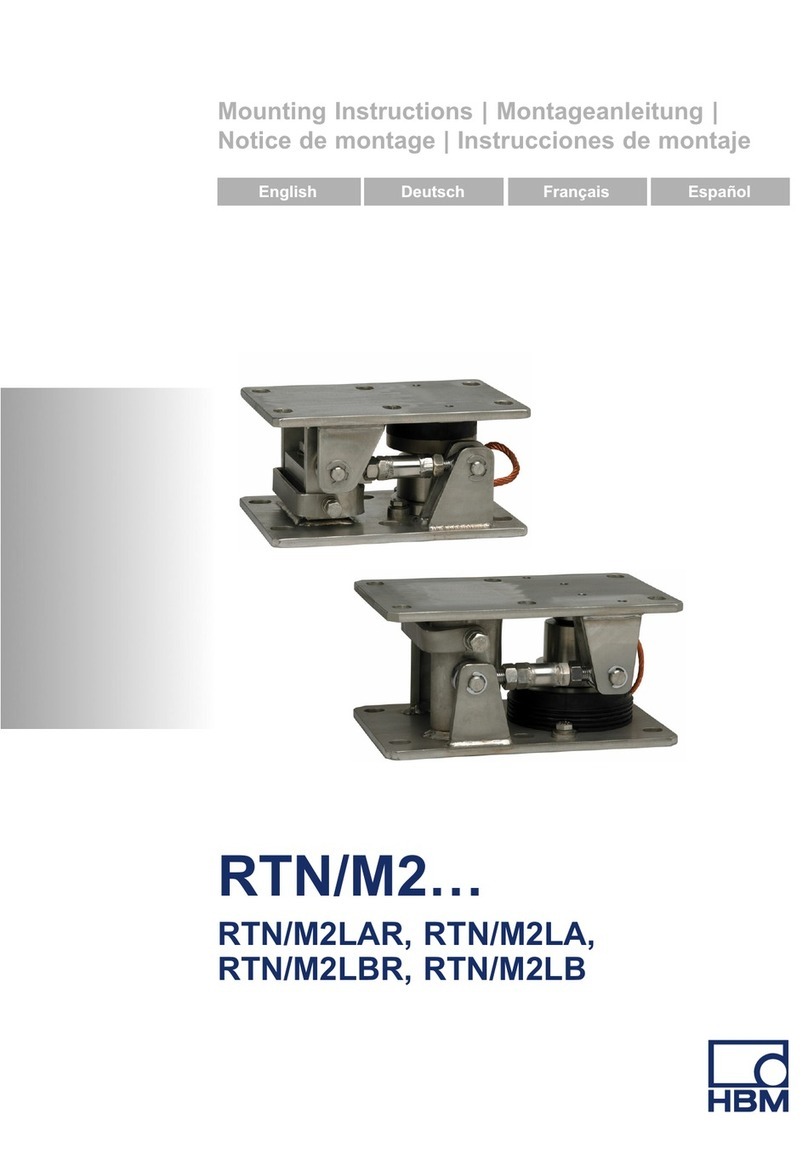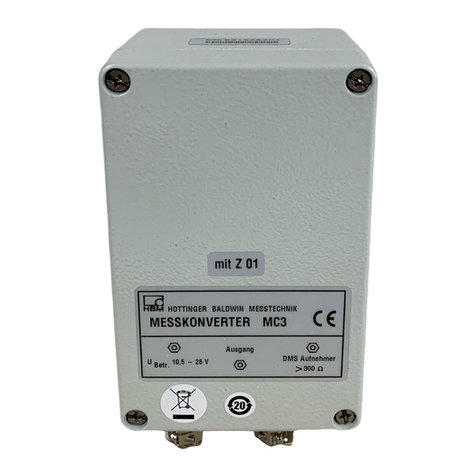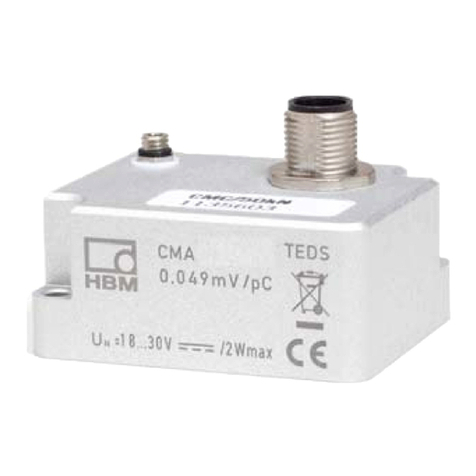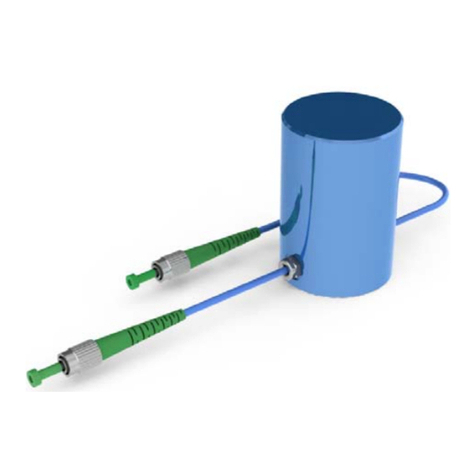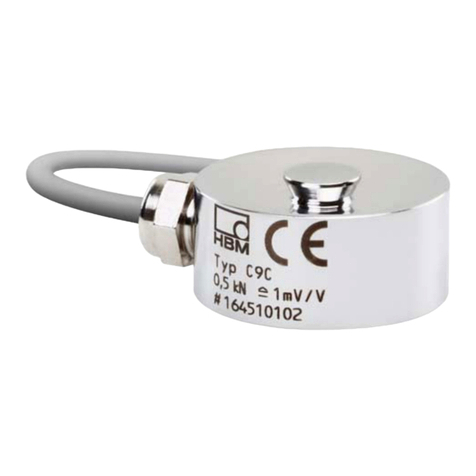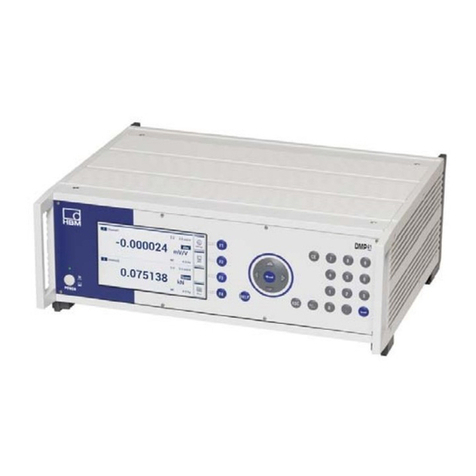3Wägezelle •Load cell •Capteur de pesage C16i...
MA.C16i.0def -- 284.00--1053.4 -- Version a -- 05.04.2001
français (page 18 ... 25) = en préparation
2 Montage
Allgemeine Hinweise
DWägezelle bitte schonend handhaben.
DFür die Montage der Wägevorrichtung geeignete Hebezeuge verwenden.
DWägezelle nicht überlasten, auch nicht kurzzeitig (z. B. durch ungleich verteilte Auflagerlasten)
DBei Richtarbeiten ggf. gleichhohe Stützkörper (Dummies) einsetzen.
Die C16 ist eine Pendelwägezelle, die die Aufbaukonstruktion bei seitlicher Verschiebung der
Lasteinleitung (= Schrägstellung der Wägezelle) selbsttätig in eine stabile Ausgangslage
zurückführt. Die maximal zulässige seitliche Verschiebung bzw. Schrägstellung (siehe
Abmessungen = Kapitel 5) darf nicht überschritten werden, da es ansonsten zu Beschädigungen an
den Wägezellen oder den Lasteinleitungen kommen kann. Die einfachste und gängigste Lösung
stellen hier entsprechende Anschläge an der Aufbaukonstruktion (Waagenplattform) dar, die
sorgfältig innerhalb der angegebenen Werte einzustellen sind.
Als Einbauteile für C16i sollten EPO3/50t + C16/EPU44A oder C16/ZOU44A von HBM verwendet
werden, da hiermit eine problemlose Montage möglich ist. Die an den Wägezellen angeschweißte
Verdrehsicherung und der mitgelieferte Spannstift sind ebenfalls hierauf abgestimmt (siehe
Abmessungen = Kapitel 5).
Montagevorbereitungen:
Folgende Vorarbeiten sind bei Verwendung von EPO3/50t + C16/EPU44A oder C16/ZOU44A als
Lastein- und Lastausleitung zu treffen:
Jeder Wägezelle liegt in der Verpackung ein Spannstift bei, der in Verbindung mit der an der
Wägezelle angeschweißten Verdrehsicherung eine mögliche Mikrorotation des Aufnehmers und
damit eine evtl. Kabelbeschädigung verhindert. Dieser Spannstift ist mit einem Hammer in die am
Druckstück vorhandene Sack-Bohrung bis zum Aufsitzen des Stiftes einzuschlagen. Dabei die
offene Seite des Spannstiftes radial anordnen.
Anordnung des Spannstiftes zur Verdrehsicherung: oder
Offene Seite radial anordnen !
!
Durch die Tiefe der Bohrung ergibt sich der korrekte Sitz des Stiftes. Je Wägezelle ist nur ein
Druckstück mit diesem Stift zu bestücken. Dieses muß unterhalb der Wägezelle montiert werden,
da der Spannstift dann in die vorhandene Aussparung der Verdrehsicherung eingreifen kann (siehe
Abmessungen = Kapitel 5). Die Bohrung am oberen Druckstück bleibt unbestückt.
Beachten Sie hierzu auch die speziellen Hinweise am Ende dieses Kapitels.
Die Stellflächen bzw. Fundamente unter dem unteren Druckstück (Lastausleitung) und über dem
oberen Druckstück sollten möglichst eben und waagrecht sein. Die Druckstücke können bei
entsprechender Qualität der Flächen auch direkt auf Beton aufgestellt bzw. angeschraubt werden,
so daß keine weiteren Platten bereitgestellt werden müssen.
Die für Befestigung bzw. Fixierung erforderlichen Bohrungen sind vor der Montage an Brücke bzw.
Behälter und Fundament anzubringen. Die Abmessungen bei Verwendung von C16/ZOU44A bzw.
EPO3/50t + C16/EPU44A sind aus den Maßzeichnungen in Kapitel 5 ersichtlich.












